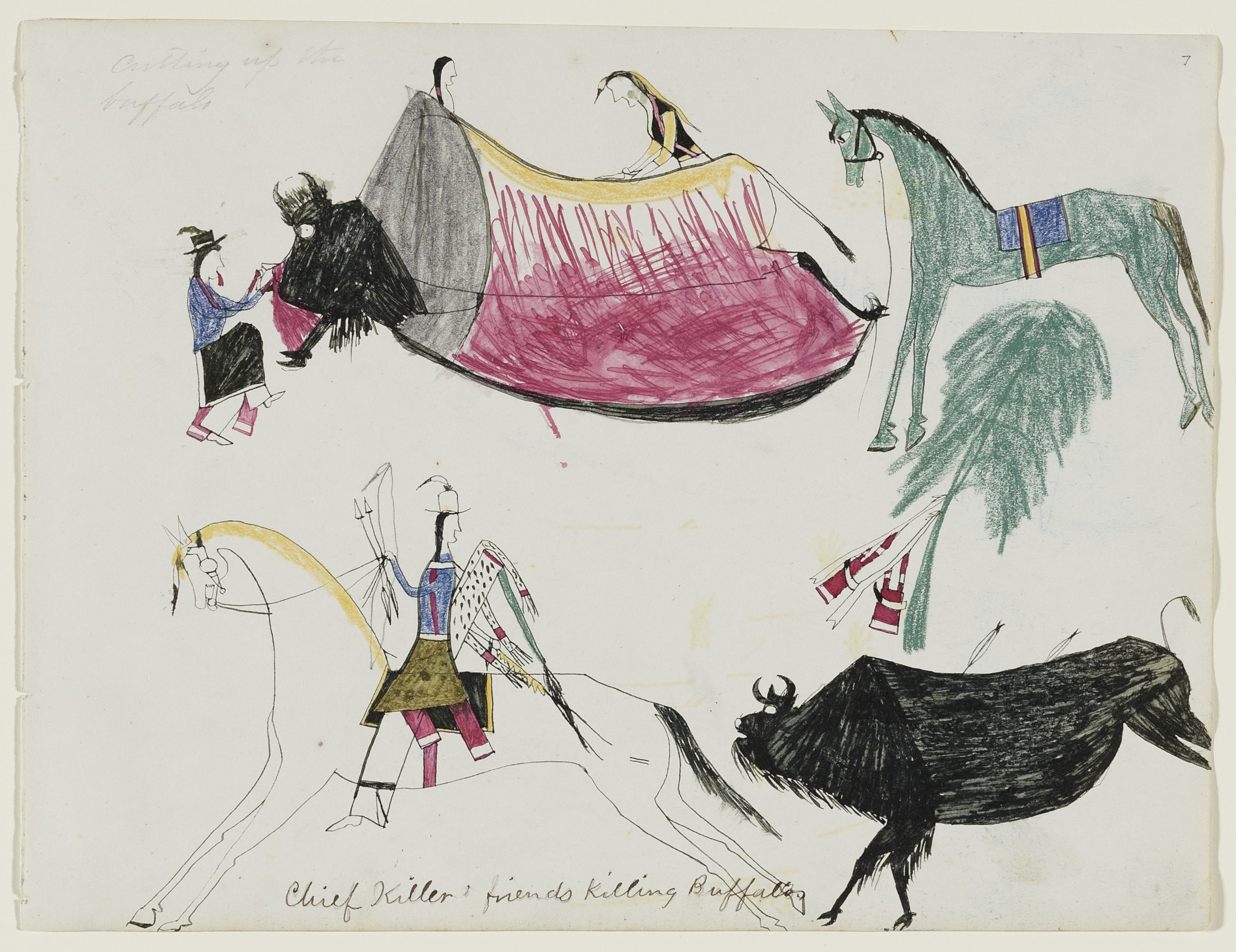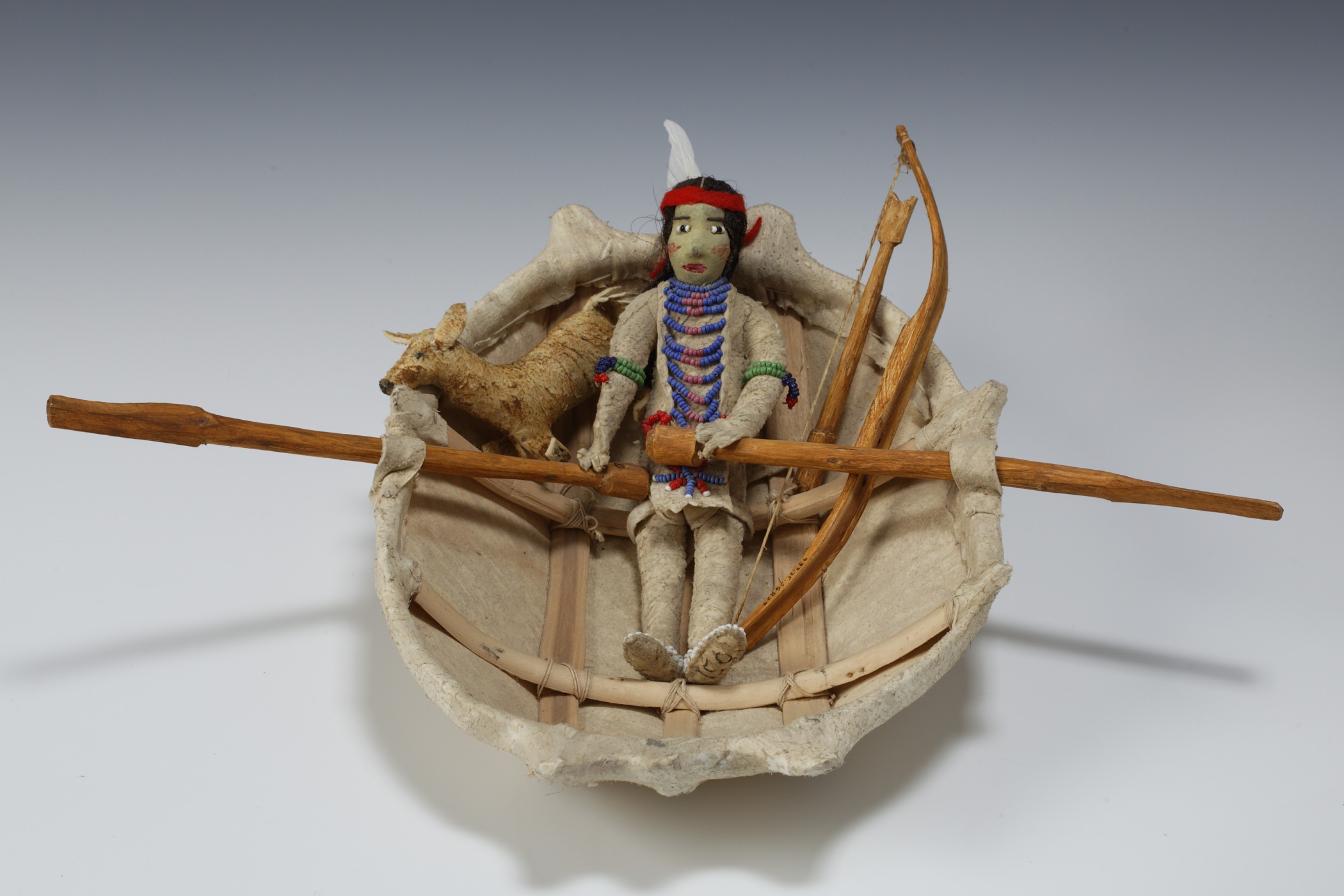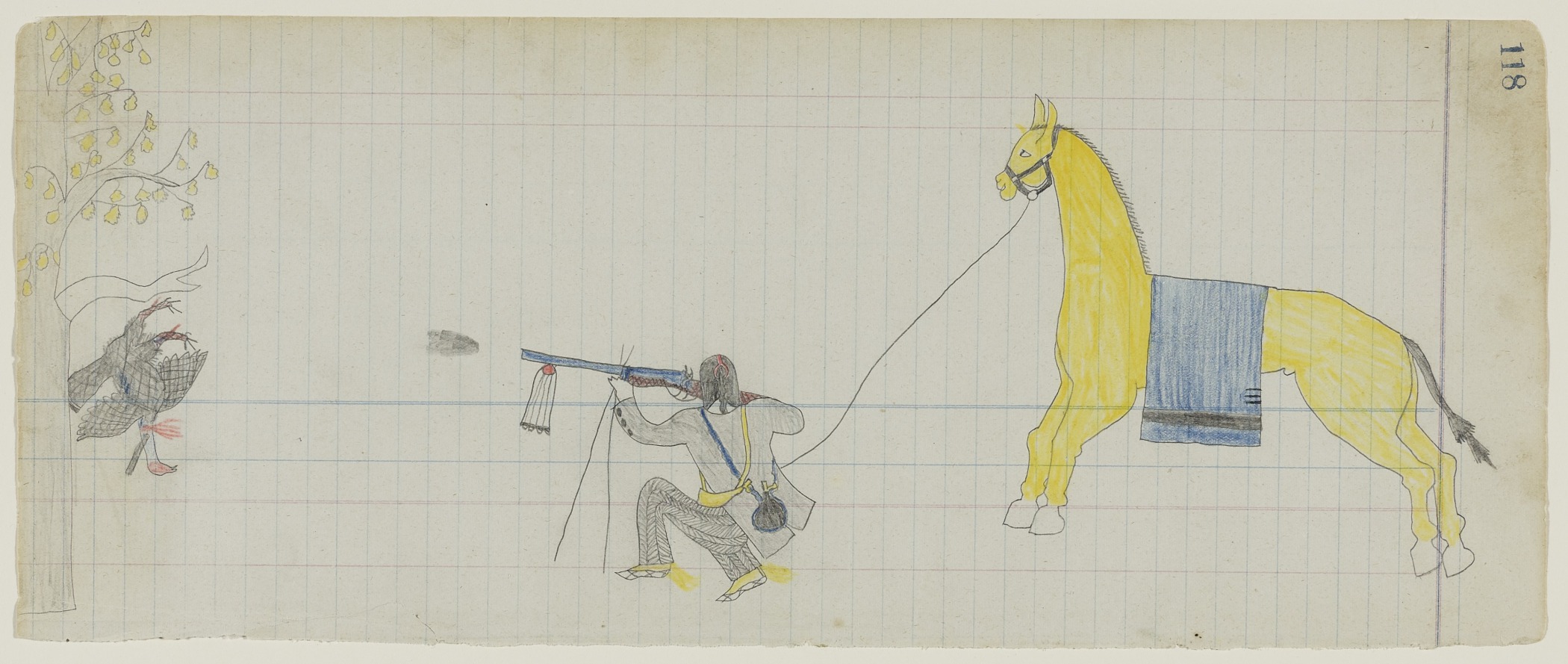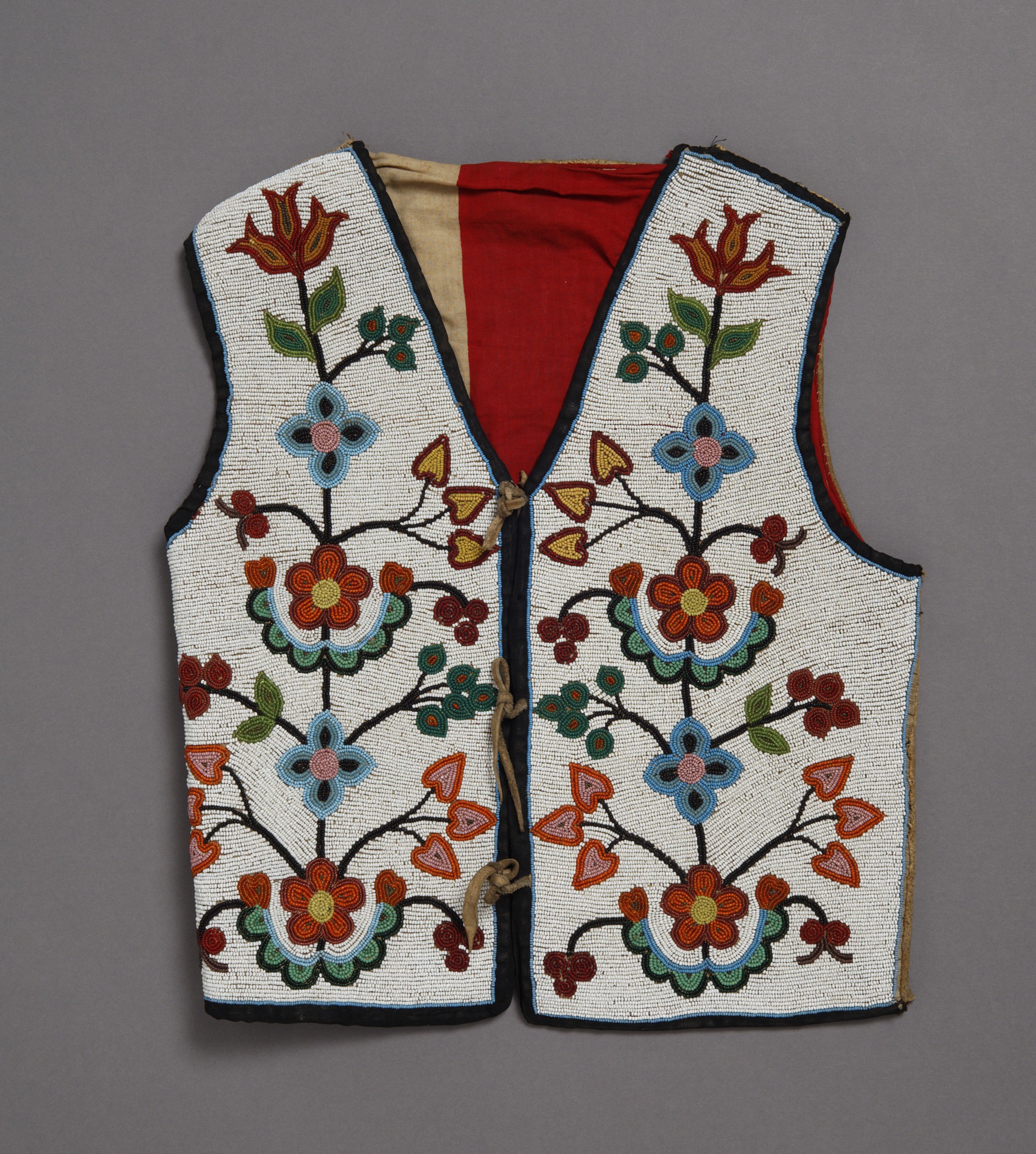Unknown artist, American (Southern Tsistsistas), active late 19th century
Untitled (Hunting Turkey), page 118 from the Arrow’s Elk Society Ledger
- About 1874–75
- Graphite and colored pencil on laid ledger paper
- 6 1/8 × 14 13/16 in.
Hood Museum of Art, Dartmouth College: Mark Lansburgh Ledger Drawing Collection; Partial gift of Mark Lansburgh, Class of 1949; and partial purchase through the Mrs. Harvey P. Hood W’18 Fund, and the Offices of the President and Provost of Dartmouth College; 2007.65.25
visibilityLook & DiscussThis detailed drawing by an unknown Tsistsistas (Cheyenne) artist depicts a turkey hunt. Wild turkeys were an important food source. In addition, hunters attached or fletched turkey feathers to arrows to help them fly straight.
The artist has provided a great deal of information about the hunter, whose name was George Bent, and the hunt depicted in this work.
explore the object
The scene depicted here may take place in the fall, perhaps September or October, based on the yellowing leaves. It is probably early morning or late afternoon, because the cock turkey has been roosting in a cottonwood tree.
George Bent wears partly beaded moccasins, with their tops and long heel fringe painted yellow. His hair is arranged in the traditional Tsistsistas way with a circular, braided scalplock. His parting is painted red. Otherwise, he wears Western-style clothing, including corduroy trousers and a jacket.
To help steady his aim, Bent has balanced his double-barreled (two triggers) shotgun on a brace made of crossed sticks. A powder horn and shot flask hang around his shoulders. He has tied a fan of golden eagle tail feathers to the muzzle of his gun. His skill is clear. He has shot the turkey in the neck, a difficult shot, to avoid damaging the meat, organs, or the feathers.
Bent’s mule waits quietly by his side. It wears only a blue wool trade blanket. The animal is so well trained that the hunter can ride him without any reins, using only the lead attached to the halter.




